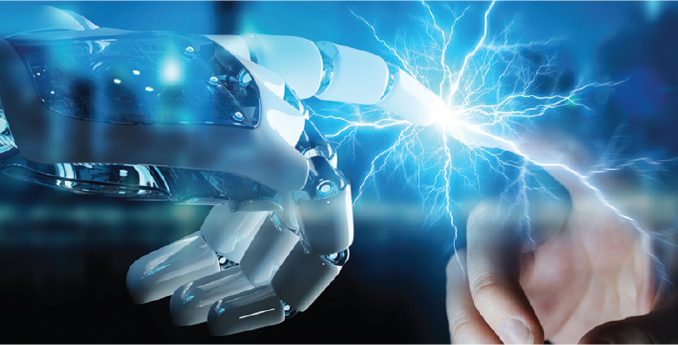
The power sector in India faces huge financial losses due to energy wastage during transmission and distribution, besides being susceptible to considerable electricity downtime arising from various faults. Besides, recent technology breakthroughs in energy storage, electric vehicles and integration of distributed energy sources have placed new demands on electricity supply systems. Power utilities are thus
transitioning towards smart grids to achieve optimisation in energy production, transmission, distribution and storage. However, to enable a grid to become smart, a huge amount of data is required to be exchanged between the grid components and enterprise systems that manage these components. Promising technologies such as internet of things (IoT), artificial intelligence (AI) and machine learning (ML) are thus enabling utilities to move closer to developing smart grids by adding intelligence to the existing infrastructure, connecting assets to intelligent networks and using data analytics to extract meaningful and actionable insights.
Use cases and opportunities
Bidirectional energy flows are a key feature of smart grids. The most common and obvious application of IoT in utilities is smart meters. Smart meters can monitor electricity consumption in real time and alert electricity companies in case of a power outage. Additionally, smart meters allow companies and consumers to analyse power consumption and gain critical insights.
Smart grids are embedded with an information layer that allows communication between their various components, so they can better respond to quick changes in energy demand or urgent situations. This information layer, created through widespread installation of smart meters and sensors, allows for data collection, storage and analysis.
Given the large volume and diverse structure of such data sets being generated in a smart grid, techniques such as ML, AI and analytics are best suited for their analysis and use. The power of AI and ML can be harnessed to automate processes within data management, which can in turn be used to predict failures, help in energy management and load management across the grid, and automate the maintenance signals to predict where maintenance may be needed. This would enable operators to prioritise work, save money and reduce downtime.
In a smart grid, once there is an alert from the advanced metering infrastructure, the global positioning system (GPS) and load and line interrupters, the utility can contact all the meters in the area to see if it is an isolated incident or a widespread outage. Then the utility can inform customers that they are responding, and how long restoration will take. Even consumers will directly benefit from smart grids, as analytics can provide the types of actionable information they are looking for. They can monitor their consumption patterns in real time. They can also see if their bill reflects normal usage or indicates a problem, like a leak or faulty meter.
Running data analytics on a consumer billing database can further provide insights into such areas as consumption patterns, historical payment trends and consumer behaviour. Utilities can use these insights to plan various actions in the field that would improve their operational and commercial performance.
AI can also optimise energy storage and release by identifying surplus energy that can be stored, or the need to release energy from storage to meet peak demand. AI can also assist in managing supply and demand by analysing smart meter information and using it to predict peaks and troughs in demand on a real-time basis. Data analysis can also be used for quality monitoring of renewable energy, as well as renewable energy forecasting, along with the latest innovation in information and communications technology.
Conclusion
However, despite the extensive potential of using AI in smart grids, there are some challenges related to it, such as cybersecurity concerns. Further challenges include building the capacity to integrate different data sources and ensuring that all representatives in the database are taken into consideration. Incomplete metering or unavailability of correct data can be a bottleneck when running various analytics algorithms to derive the full potential of analytics systems and ensure a return on the investment made. There is also a lack of trust in AI predictions until there is a sufficient base of data and ML that is not skewed or erratic. Decisions will thus still need human oversight and decision-making. Nonetheless, as these technologies mature and the data becomes more reliable, more reliance can be placed on AI and IoT applications to accelerate a successful transition to a smart grid.
